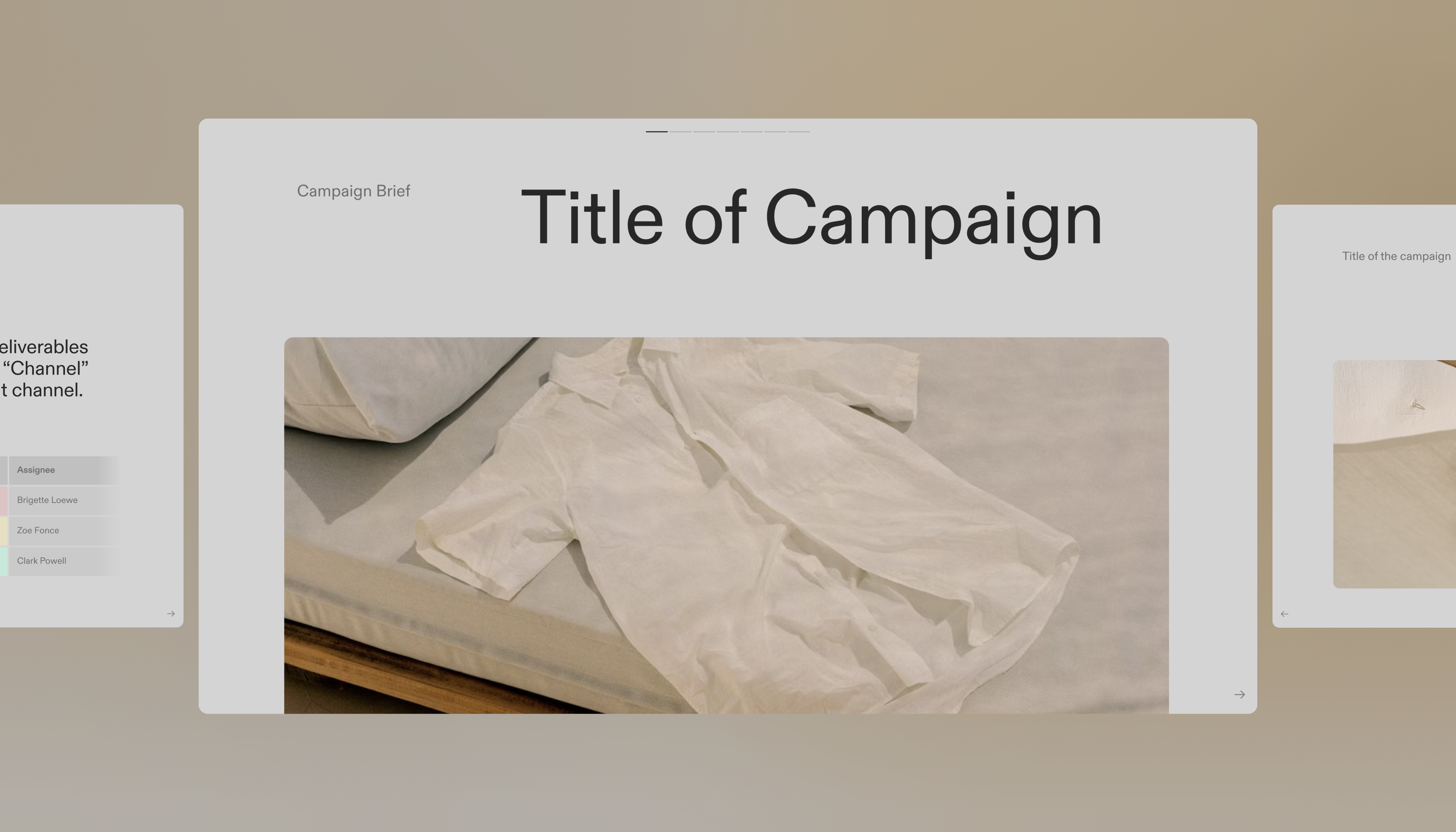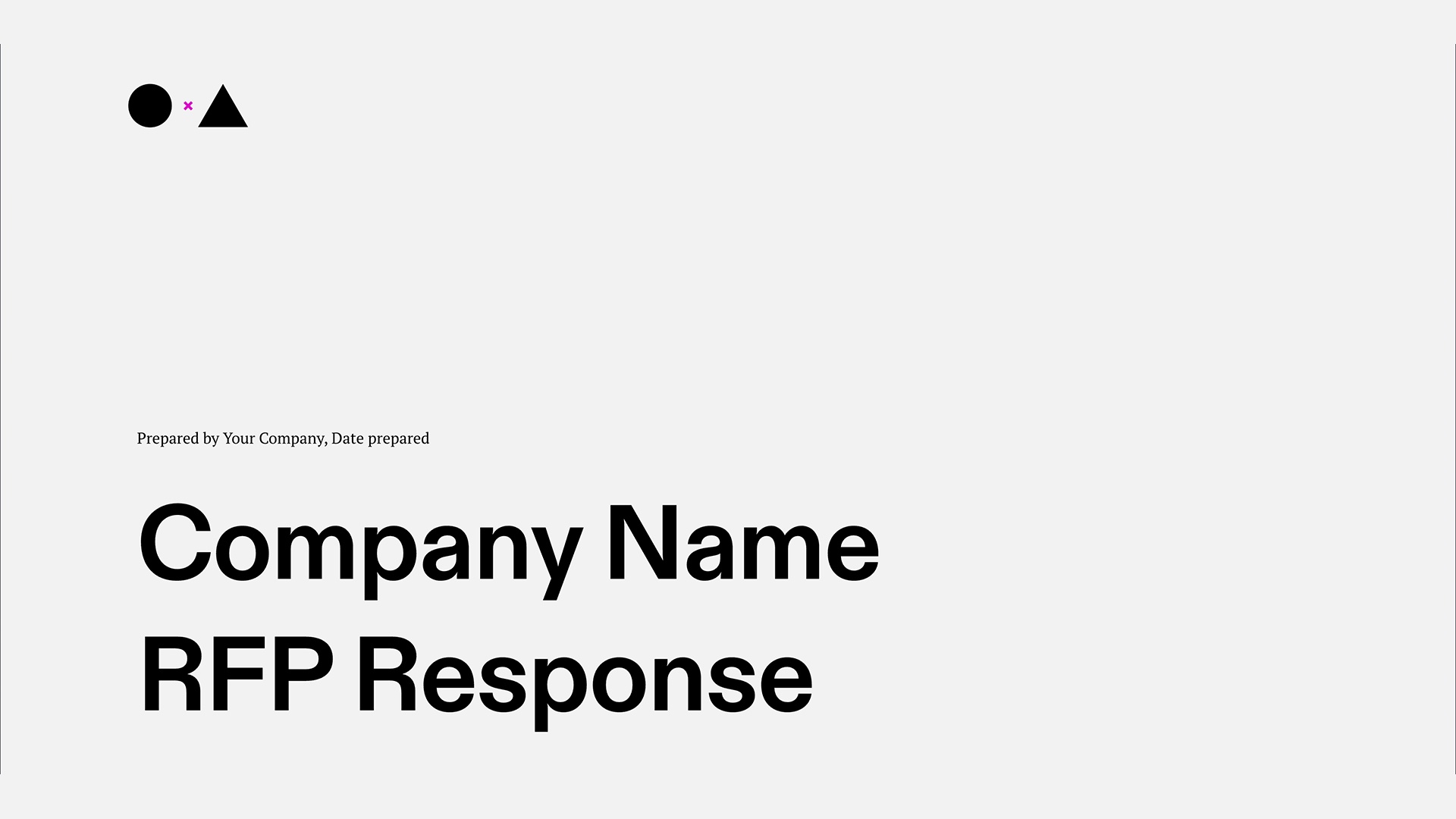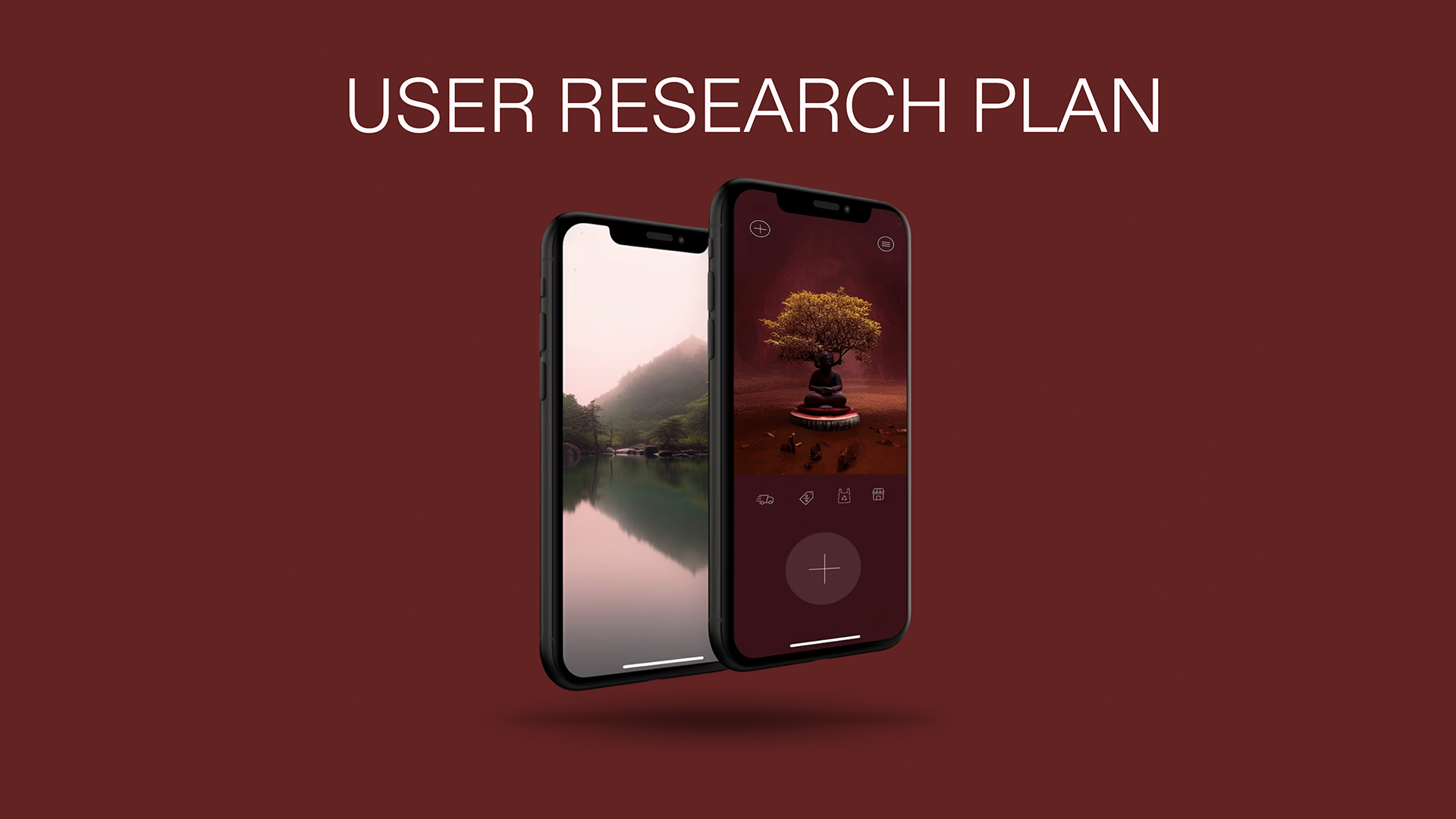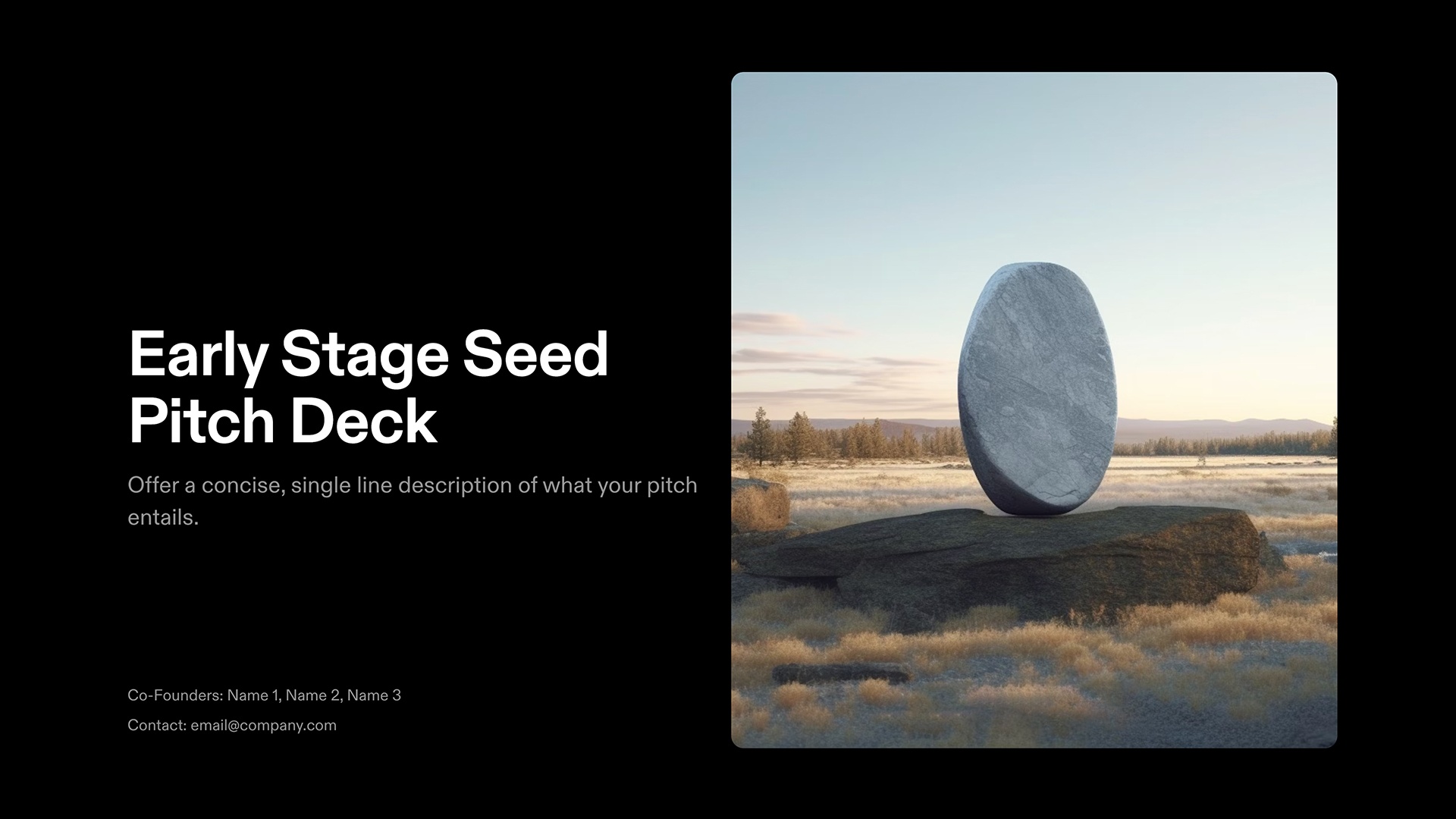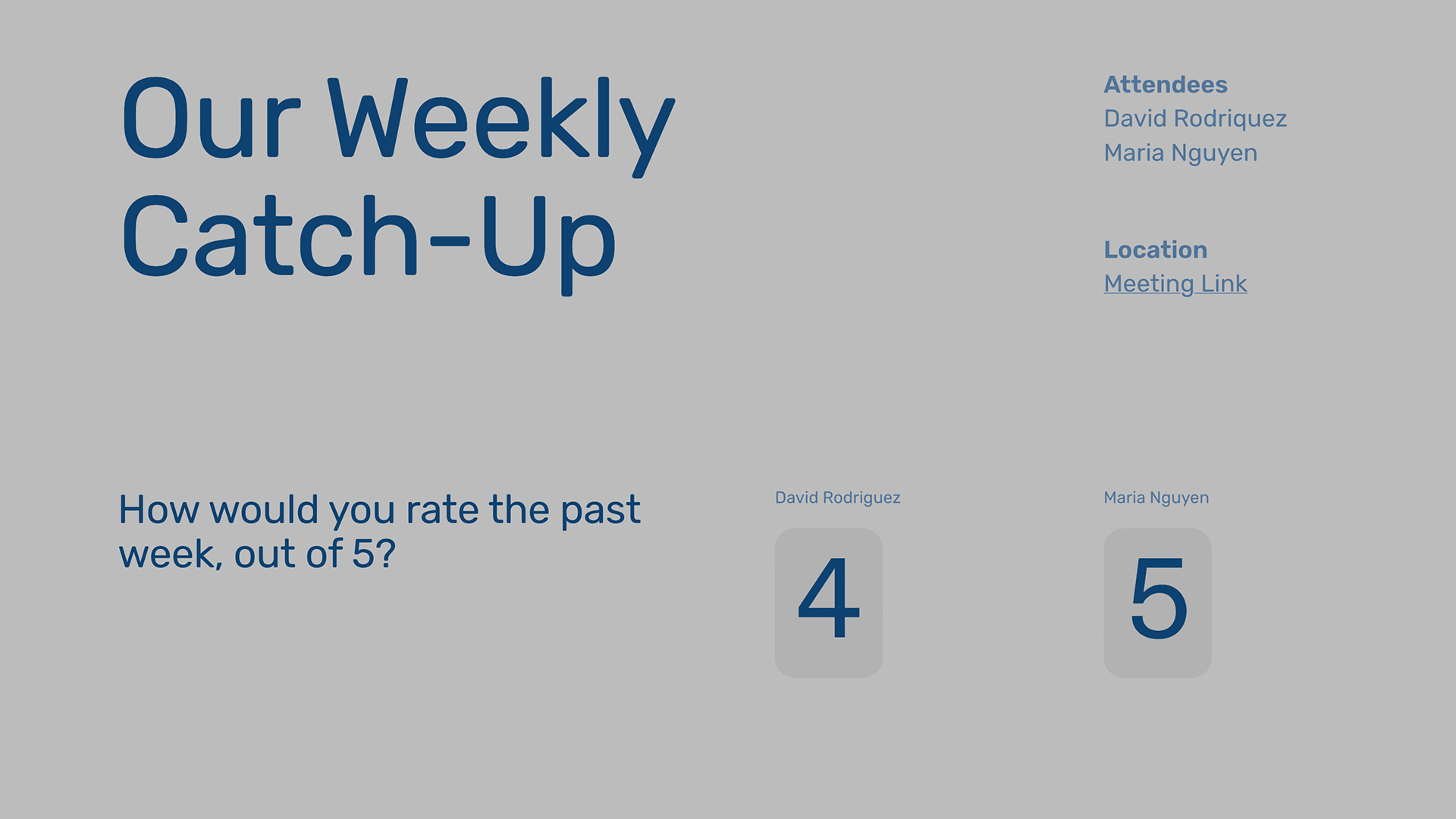How to Create a Winning Consulting Pitch Deck
Here’s exactly what to include—plus tips for success from Matt Chung of Matt Chung Studios.
About this template
As a consultant or solopreneur, your pitch deck does more than market your services or showcase the best of your portfolio. It’s a tight presentation with a distinct goal: to position you as the long-awaited solution to a unique need.
In order to win their business, potential clients will be looking for signs of a singular, compelling take on a challenge—no matter how common or mundane it is—backed by expertise and credibility. How does one deck pull all of that off in a handful of slides? With careful, targeted language—and enough confidence to know when to hold back.
Template outline
- Overview
- Highlight Statistics
- Challenge
- Solution
- Result
- Text-Only Layout
- Image-Only Layout
Tell a powerful story
- Editable with AI
- Beautiful typography
- AI layout generation
- Narrative Guidance
- Automatic mobile layout
- AI reference sourcing
- Share or link anywhere
- Downloadable as a PDF
- Real-time collaboration
Expert Tips
What is a consulting pitch deck?
A consulting pitch deck is a presentation or document that contains an overview of your consulting services, past success rate, and creative vision for potential clients. Part sales pitch and part portfolio, a consulting slide deck is an opportunity to introduce yourself and showcase all the ways your work is the best fit for a client’s needs.
What to include in your consulting pitch deck
Pitch decks are a strategic must-have for individual consultants and consulting firms alike. Whether you’re sending out an unsolicited project pitch to your dream brand partner, or responding to an official request for proposal (RFP), you’ll need to closely tailor your consulting presentations to the audience. What shouldn’t change much is the general foundation.
An effective consulting pitch deck needs to include the following:
1. Introduction
The introductory slide to your consulting pitch deck is arguably the most important. Your ability to hook your reader with a compelling first line will set expectations, pique curiosity, and—most crucially—convince your audience to keep reading.
The introduction, counterintuitively, is not about introducing yourself. Instead, think of it as a space to declare your intentions behind the project or partnership you’re proposing, either with a catchy title or thought-provoking statement. Keep it short, keep it impactful: it’s the moment before the curtains go up, and it sets the tone for what follows.
2. The problem
As in any sales pitch, a consulting pitch deck opens with a problem, or a pain point—though it might be easier to think of the “problem” as the opportunity your project fulfills. This slide is about diagnosing the brand you’re pitching, highlighting the areas for growth that you see. Be specific, where possible: the easier it is for brands to understand the financial implications of the gap you’ve identified, the more likely they will be to want to pay to remedy it.
Note that this slide should be a high-level assessment, rather than a detailed audit.
3. The solution
Next, the solution, and a chance to position yourself as the best person to provide it. This should still be a concise sentence or two that responds to the questions posed by the previous slide. If a brand is lacking in high-quality video content and losing a competitive edge as a result, this slide should explain why investing in that content will be beneficial: what are the possible wins? What returns should they expect by hiring you?
4. The concept
Now that you’ve convinced your reader that a) they have a problem in need of solving, and b) you know just how to solve it, it’s time to introduce the concept with a summary that channels your own excitement.
The amount of detail you include here will depend on whether the pitch is the result of an inbound request or not. If you’re sending an unsolicited pitch deck out cold, the concept might be presented in a looser framework that allows for more flexibility once you learn more about the client’s priorities or goals; a response to a request should take any available details into account, and position the project within the context you’ve been given. If they’ve come to you, you may feel more comfortable going into more detail than you might as an unknown.
A concept slide can be a single page with supporting imagery, or it can expand to include a vision or mood board that include your own work or images that communicate the style of the project as you see it. If there are multiple key components to the idea, this can be a space to show how they intersect.
5. Social proof and past work
A case study or a testimonial can do wonders for trust, especially when building a new relationship. Reserve a page for highlighting examples of your best work—especially if that work was the product of a successful brand partnership. This slide should give potential clients a strong idea of your unique approach, underpinned by proven professionalism.
6. Optional: Pricing
A rate sheet captures your pricing, broken down by package (especially if your pitch has tiered elements) and their respective deliverables. Some consultants prefer to leave pricing talk out of initial pitches, but including a ballpark number can be useful for brands who need a rough idea of what you’ll cost before they book a follow-up call.
7. Contact information
Wrap up with a contact sheet and next steps, which is almost always a phone call or virtual meeting to learn more. Your contact information should include an email address, social media links, and, if you prefer, a phone number.
4 Tips for creating a winning consulting pitch deck
Photographer Matt Chung serves as the creative force behind Matt Chung Studios and the MCS Creator Collective, which provides mentoring services for aspiring creators looking to break into brand work. An architect by training, Chung’s eye for beauty—especially the kind found in the natural world—has helped brands step up their storytelling with dynamic imagery and adventure-fueled campaigns.
Thanks to a passion for graphic design and years spent helping other creatives finesse their pitches, Chung has an intuitive sense of the consulting pitch deck: what works, what doesn’t, and how you can stand out while aligning yourself with a brand’s mindset. Here’s what he’s learned.
1. Keep it short.
Just starting out? Beware the overshare. Explaining your vision in microscopic detail might appeal to your sense of creative diligence, but in reality, most prospects will only skim your slides, looking to get the gist of your pitch and capabilities as quickly as possible.
In the beginning, Chung fell into the same trap as many eager creative professionals before him, submitting 15-page decks and diving too deep into the nitty gritty of his proposed visual approach.
“I just was saying too much,” he admits. “I'm a lot more direct now. If you say too much, you're saying nothing at all—I've learned to be really concise with what [I’m] saying, making sure that it'll hit home with them and they'll understand it. It’s about getting the general idea across: I show them that I understand some of the pain points they may have, and then I show how I’m the one with the solution.”
Ultimately, try not to confuse your passion for an idea with an inability to self-edit: condensing your presentation into five or six simple slides leaves more space for you to vocalize your ideas once you land a follow-up call—and that’s where you can wow them with the impressive depth and breadth of your execution.
2. Center the client.
Speaking of self-editing, remember that a pitch deck may appear on its face to be about you and your work, but it’s actually about the client—and how you fit their unique needs.
“A big thing I see in the creative industry is that a lot of people feel like they need to speak highly of themselves in order to get paid,” Chung says. “I think the work you showcase—and again, that could just be one page—has to reinforce that you’re the person for the job. But the bulk of the deck should speak to how you’ll provide value to them.”
In other words: You’ll need to convince them they need you, rather than hoping they’ll like you enough to fit you in. Rather than packing your pitch deck with a list of your achievements or preferences, examine your deck to be sure you’re actively identifying solutions as an expert in the space. What you include should reflect your strengths. If you’re a photographer, that means high-quality images. If you’re an HR professional, you might include client testimonials that attest to the quality of thought partnership you provide.
This can be represented in your design, as well. “Sometimes I’ll use keywords from their mission and brand story in my pitch to help it resonate,” Chung says. “Or I’ll tweak the colors of the presentation to match their brand colors. When they receive it, it’s clear that I took the time to understand them.”
3. Aim for a clean, engaging design.
As in any situation where you’re hoping to hold someone’s attention, presentation is key. Ideally, Chung says, each page should speak to one thing, allowing for an uncluttered delivery.
“I like to think about it in terms of making a good first impression,” he says. “If it looks a certain way, it screams professionalism and personality. It’s not the most important thing, but it can really separate you from everyone else.”
Not to worry if you’re not a photographer or a graphic designer by trade: the messaging is the critical thing to get right. “As a visual person it wouldn’t feel authentic without that piece,” he adds. “It’s a representation of who I am, my attention to detail.” Above all, he says, communicate the “why” of your vision in the style that makes the most sense for you, then tap into resources like Tome’s consulting pitch deck template to help make it look effortless.
4. Leave fees for the follow-up.
There are two schools of thought when it comes to rate sheets: one is ruled by transparency, the other, flexibility. Depending on who and what you’re pitching, your anticipated fees may be welcome and anticipated—or shut down conversation before it even begins.
“Even if they love the idea, once you drop a number on them, you risk losing them if they feel like they can’t afford it,” Chung says. “Most of the time, I’ve found success when I present an idea and build interest around it, then jump on a call and talk through solutions.”
Tome’s templates for consultants
Tome’s templates for consultants include a consulting pitch deck template and consultancy portfolio—ideal for presenting your work in a clean, visually appealing format.
“Before Tome, I was always trying to find a way to intuitively present my ideas so that there was no friction when the client actually saw it. I had to make them look beautiful, and sometimes it would take me a while because I’m a design freak, which meant I was spending way too many hours on a pitch that may or may not get seen. Then I’d have to export it as a PDF and sometimes it’d be so big I’d have to compress it…it was the worst process ever. Now I can just send a link out and it looks beautiful and already mobile-optimized. It’s drag-and-drop and it looks really clean.”
Learn more about how entrepreneurs, independents, and freelancers—however you self-identify—use Tome to share their stories faster.
